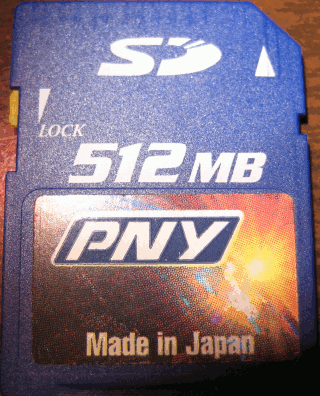The other day, my 512MB SD card died all of a sudden. A minute before it seized functioning, I was transferring a few files onto it.
In theory, a flash device should be able to endure millions of write cycles before permanent failure(see my previous experiment here. eeeuser.com provides some more in-depth analysis), which translates into more than a couple dozens of years of useful life span. Clearly flash devices in general are much more reliable than their mechanical counterparts – hard drives, at least in theory.
But when disaster does strike, it seems that it is very hard if not impossible to recover data from the failed flash device (to successfully recover data from a failed flash device, chip-level or sub chip-level analysis would be required. And such analysis cannot be done without resorting to some very expensive equipments and likely the cost would be astronomical.). My SD card failed without any warning signs, and the next thing I knew was that I could not read or write to it and I kept getting some IO error messages. Even the low level routines would not be able to revive the card.
On the other hand, the failure mode of a hard drive is fairly well understood and generally resulted in some form of mechanical failures (e.g. disk head crash). Since during a hard drive failure it is likely that only a very small portion of the disk surface is damaged, it is possible to recover most if not all the data from a failed drive. Professional services for such data recoveries are fairly mature and generally can recover data from a failed hard drive under $1,000. Sometimes if the crash is not severe, you might be able to do the data recovery yourself.
We have yet to see how the data recovery aspect of the flash device is as such device becomes more popular.


